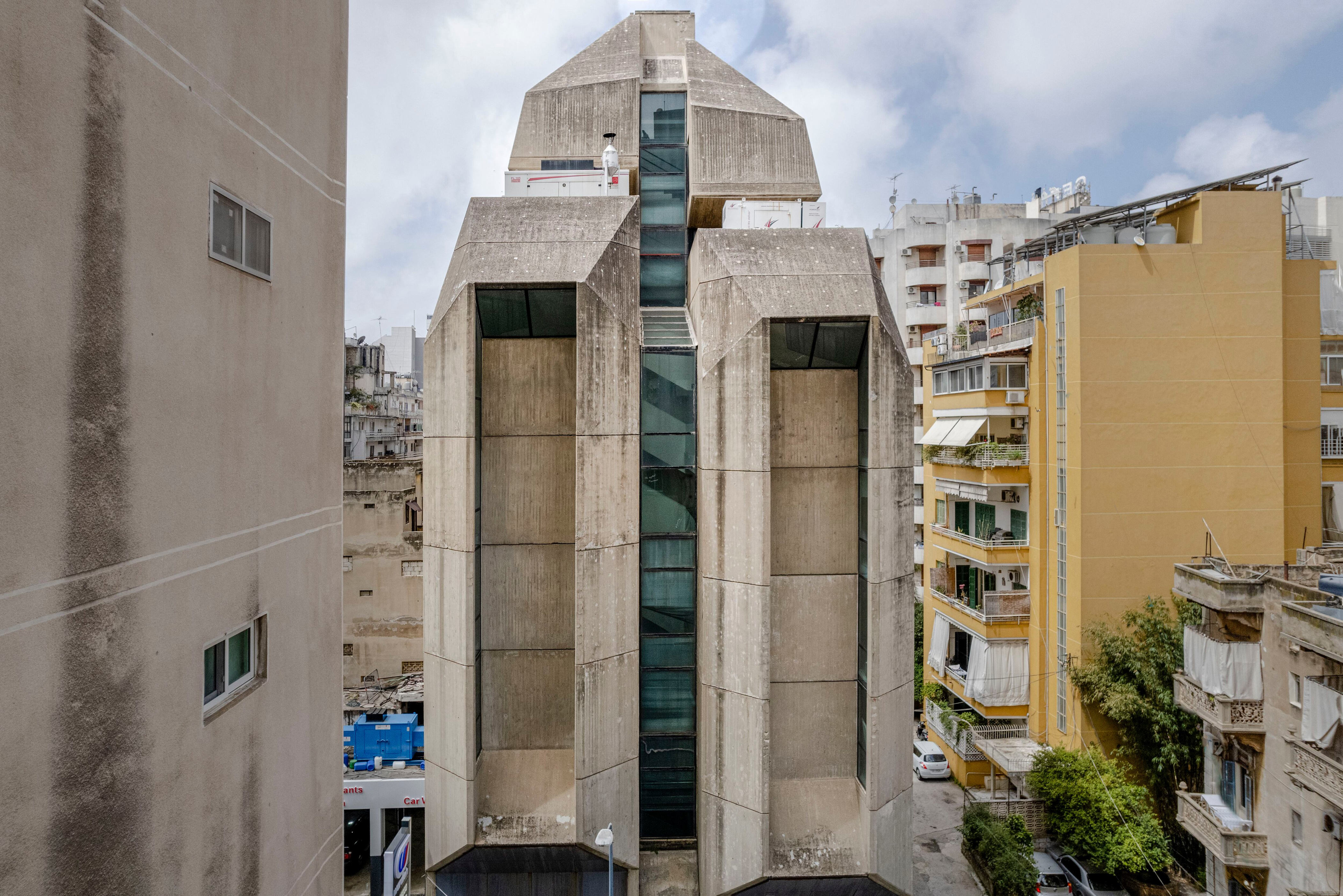
LEBANESE ARCHITECT KHALIL KHOURI'S BRUTALIST BEIRUT BUILDING IS REVIVED BY HIS FAMILY
Beirut's iconic Interdesign Building is a unique architectural curiosity in the Lebanese capital. It is a captivating, brutalist concrete structure that has stood largely empty since its completion.
Designed by the late Lebanese industrialist Khalil Khouri, the Interdesign Building was conceived back in 1973 – in the middle of what many consider to be the golden years of Khouri’s career – but the outbreak of civil war in Lebanon halted construction. After numerous false starts, the project was not completed until 1997, only to be seized because Khouri was bankrupted by the cost.
Now, after decades of dormancy, the Interdesign Building may at last be fulfilling a part of its original purpose. It is being revived in an exhibition called All Things Must(n't) Pass: A Subjective Recount Of Khalil Khouri’s Life And Career As A Designer.
Part of the We Design Beirut’s programme of exhibitions, it was instigated by event founder Mariana Wehbe alongside architects Bernard and Teymour Khoury, who are the son and grandson of Khalil Khouri.
“The story of the Interdesign Building is phenomenal,” Wehbe told The National. “We wanted to look back in time and have a serious talk about architecture. So, I reached out to Bernard and said: ‘I want you to do retrospective about your father.’”
Bernard Khoury explained: “The 60s and the early 70s were very prosperous years. My father's business was unique because it was very autonomous. Even the machines they used were manufactured in-house.
“He was like an artist, just at a much larger scale. It was a very modern project, but still in touch with the artisanal culture. They had very ambitious aspirations at the time, so he decided to design and build his own showroom.”
The layout of the Interdesign Building is genuinely one-of-a-kind, both inside and out. Khouri’s design revolves around a system of split-level floors arranged around a central staircase, creating an exhibition space where visitors are able to view displayed objects from multiple perspectives as they move through the building. Illumination is provided by large, vertically-aligned windows, feeding sunlight into the structure from above.
This striking construction is why the Interdesign Building has never been successfully repurposed over the decades since it was seized. Between the unusual windows and irregular floor plan, any attempt to alter the interior drastically restricts the supply of natural light. The structure is completely committed to Khouri’s original purpose, making it something of an architectural ‘white elephant’.
For Bernard Khoury, this exhibition is an opportunity to bring the space back to its originally intended purpose.
“I have a very unique situation here,” Khoury said. “The designer of the furniture also designed the building in which he was going to exhibit the furniture, which is the same building we are using for the show.
“It took 26 years to complete the construction of this building. There's something very odd about the fact that it was finished in a period where it was no longer functional. It was literally an instrument to exhibit these pieces.”
Displayed on the 24 plateaus of the Interdesign Building, are pieces of furniture recovered from the family factory – closed for more than 20 years, and vacated last year – that go back to the 1960s.
The exhibition also contains catalogues, drawings, artworks, architectural designs, models and prototypes from Khalil Khouri’s personal archives, tracing all the way back to his childhood and extending all the way through to the end of his life.
“He was certainly one of the most important modern architects in this territory,” Khoury explained. “In 1977, after the first round of fighting during the civil war, when we had hopes of a peace project, he was brought forward to design the masterplan for the reconstruction of the city centre of Beirut, which we are also showing.”
“We start the exhibition trying to trace the early years of his life – with historical documents – and then we move to the mix of his artworks,” explained Khoury.
“He never showed his art. He never sold his art. This is the first time we are bringing that up to the public. They're very particular, [with] a very singular syntax and aesthetic.”
In a way, the story of Khalil Khouri – exemplified through the Interdesign Building – is also the story of Lebanon as a whole. The structure is a monument to nostalgia for the country’s so-called Golden Era as the ‘Paris of the Middle East’, during the 1950s and 1960s.
At the same time, it also demonstrates the struggles and stagnation of Lebanese civil society brought about by the civil war and, more recently, the continuing economic crisis.
By revisiting his father’s legacy, Khoury hopes to inspire future creatives in Lebanon to recapture the country’s creative spirit, but also to educate them.
“Today, as a designer and an architect, I don't have the same ambitions as my father,” Khoury lamented. “I can't afford to, and these young designers don't even know that. Most of them are unaware that there was something much bigger than us, before us.
“We've seen very tough times, and I've lived through most of them. I've seen the incredible resilience of people, and the great stuff that emerged out of this territory – sometimes during the worst years, in the most difficult of times – but I think it's very, very important that we are also aware of what preceded us.
“I'm very worried that there is a danger of forgetting what is unique to this territory.”
2024-05-30T03:10:35Z dg43tfdfdgfd